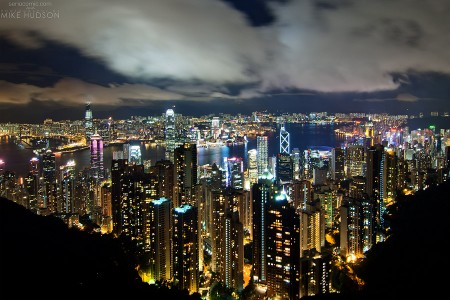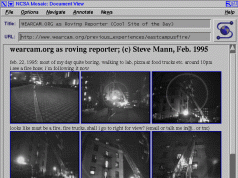Hong Kong view by Mike Hudson, www.seriocomic.com
Smart Cities as an aspiration got traction in policy circles a little more than ten years ago. Researchers at the Brookhaven National Laboratory started to make public the ideas they thought were the next big thing—efficient cities.
While the commercial Internet was going insane over the ability to order pet food online, the bright US researchers looked to the future, and it was both clean and wired. They were convinced that the nirvana offered by ubiquitous computing lay just over the horizon. Here is how the idea of smart cities got presented in 2000, one year before the events that changed everything. It is worth the read if only to remind people who are just now discovering the field that their work builds on the sweat of bleeding-edge researchers who are generally forgotten:
The vision of “Smart Cities” is the urban center of the future, made safe, secure environmentally green, and efficient because all structures – whether for power, water, transportation, etc. are designed, constructed, and maintained making use of advanced, integrated materials, sensors, electronics, and networks which are interfaced with computerized systems comprised of databases, tracking, and decision-making algorithms.(my italics) The research and engineering challenges along the way to this vision encompass many technical fields including physics, chemistry, biology, mathematics, computing science, systems, mechanical., electronics and civil engineering. At the simplest level is the basic component and its associated “feedback” or self-monitoring mechanism(s).
Each must be identified or, if already existing, tailored for the appropriate application. At the next level is the design of the system making use of these components. Associated with this would be the interface to the computerized “monitoring” capability for each given function. Next, is the full structure or service supplied, and lastly, the integration of information across all related and seemingly unrelated aspects of an urban center’s essential infrastructure.
A city that monitors and integrates conditions of all of its critical infrastructures, including roads, bridges, tunnels, rail/subways, airports, sea ports, communications, water, power, even major buildings, can better optimize its resources, plan its preventive maintenance activities, and monitor security aspects while maximizing services to its citizens. Emergency response management to both natural as well as man-made challenges to the system can be focused and rapid. With advanced monitoring systems and built-in smart sensors, data can be collected and evaluated in real time, enhancing city management’s decision-making. For example, resources can be committed prior to a water main break, salt spreading crews dispatched only when a specific bridge has icing conditions, and use of inspectors reduced by knowing condition of life of all structures. In the long term Smart Cities vision, systems and structures will monitor their own conditions and carry out self-repair, as needed.
The physical environment, air, water, and surrounding green spaces will be monitored in non-obtrusive ways for optimal quality, thus creating an enhanced living and working environment that is clean, efficient, and secure and that offers these advantages within the framework of the most effective use of all resources. This paper discusses a current initiative being led by the Brookhaven National Laboratory to create a research, development and deployment agenda that advances this vision. This is anchored in the application of new technology to current urban center issues while looking 20 years into the future and conceptualizing a city framework that may exist.
Presented by: Robert E. Hall, Brookhaven National Laboratory Contributors: B. Bowerman J. Braverman J. Taylor H. Todosow U. von Wimmersperg What is remarkable about this introduction is that a bright entrepreneur could just about take any one sentence from it and build a billion dollar company. Today, many are doing just that.







